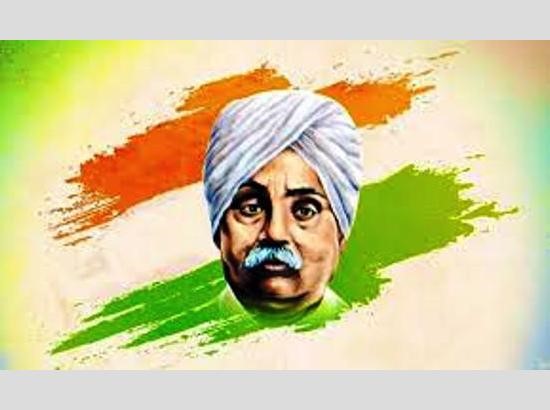
Lala Lajpat Rai (28 January 1865 — 17 November 1928) was an Indian independence activist. He played a pivotal role in the Indian Independence movement. He was popularly known as Punjab Kesari. He was one of the three members of Lal Bal Pal triumvirate.He was also associated with activities of Punjab National Bank and Lakshmi Insurance Company in their early stages in 1894. He died a few weeks after sustaining severe injuries during a baton charge by police when he led a peaceful protest march against the all-British Simon Commission, a commission constituted by the United Kingdom for Indian constitutional reform.
Rai was born on 28 January 1866 in Agarwal Jain family as a son of Urdu and Persian government school teacher Munshi Radha Krishna Agarwal and his wife Gulab Devi at Dhudike in Ludhiana district of Punjab Province. He spent much of his youth in Jagraon. His house still stands tall in Jagraon and houses a library and museum.He also built first educational institute R.K. high school in Jagraon.
In the late 1870s, his father was transferred to Rewari where he had his initial education in Government Higher Secondary School, Rewari, Punjab province, where his father was posted as an Urdu teacher. In 1880, Lajpat Rai joined Government College at Lahore to study law, where he came in contact with patriots and future freedom fighters, such as Lala Hans Raj and Pandit Guru Dutt. While studying at Lahore he was influenced by the Hindu reformist movement of Swami Dayanand Saraswati, became a member of existing Arya Samaj Lahore (founded 1877) and founder-editor of Lahore-based Arya Gazette
In 1886, he moved to Hisar where his father was transferred, and started to practise law and became a founding member of the Bar council of Hisar along with Babu Churamani
In 1914, he quit law practise to dedicate himself to the Indian independence movement and travelled to Britain, and then to the United States in 1917. In October 1917, he founded the Indian Home Rule League of America in New York. He stayed in the United States from 1917 to 1920. His early freedom struggle was impacted by Arya Samaj and communal representation
After joining the Indian National Congress and taking part in political agitation in Punjab, Lala Lajpat Rai was deported to Mandalay, but there was insufficient evidence to hold him for subversion. Lajpat Rai's supporters attempted to secure his election to the presidency of the party session at Surat in December 1907, but he did not succeed.
Rai did not fully recover from his injuries and died on 17 November 1928. Doctors thought that Scott's blows had hastened his death. However, when the matter was raised in the British Parliament, the British government denied any role in Rai's death.Bhagat Singh,an HSRA revolutionary who was a witness to the event,swore to avenge the death of Rai, who was a significant leader of the Indian independence movement.He joined other revolutionaries,shivaram, Sukhdev and Chandrashekhar Azad, in a plot to kill Scott to send a message to the British government.

Author
THANGAROJA.S (MBA I)
2022-01-17